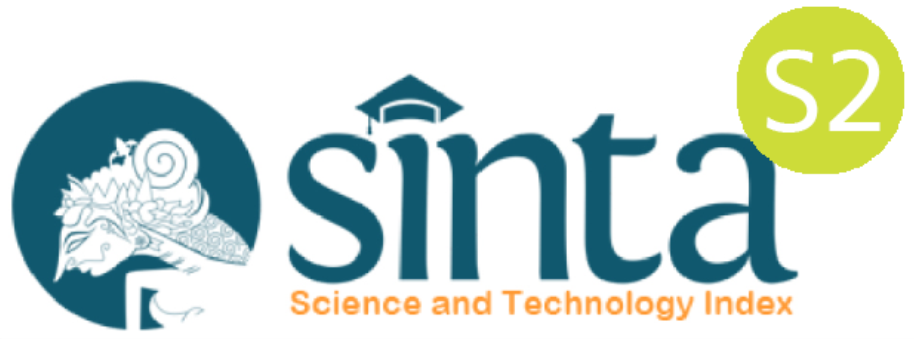ANALISIS KEMAMPUAN PEMECAHAN MASALAH PADA SOAL CERITA MATEMATIKA BERDASARKAN TEORI POLYA DITINJAU DARI ADVERSITY QUOTIENT
DOI:
https://doi.org/10.35316/alifmatika.2020.v2i1.105-128Keywords:
Problem-solving, Polya’s Theory, Adversity QuotientAbstract
One of the studen learning goals mathematics is mathematical reasoning for outcomes training student to solve the problems. One of the problems faced by students is word questions. There are several students responses in dealing with word question which is known as Adversity Quotient. This research aims to describe the students' problem solving skills in system of three-variable linear equations subject based on Polya's theory in terms of Adversity Quotient. This is a qualitative descriptive research with three subjects of students class X IPA 1 SMAN Arjasa Jember, there are one climber student, one camper student and one quitter student. These subjects took purposive sampling with consideration according to the results of questionnaire scores that meet each of the criteria of Adversity Quotient. Data collection techniques used were questionnaires, tests, interviews and observations. The validity test used is technical triangulation. Data analyzed through data condensation, data presentation and conclusion drawing. The results showed that student with the type of climber was able to meet all the indicators of problem solving in the problem of the word questions which included indicators of understanding the problem, planning the solution, carrying out the plan of solving and re-checking. Camper type student met all indicators of problem solving except at the re-checking stage. Quitter type student in completing word questions met the stage of understanding the problem and planning the solution, while the stage of carrying out the plan and re-checking is not fulfilled by the quitter student.
Downloads
References
Amanda, L., Yanuar, F., & Devianto, D. (2019). Uji Validitas dan Reliabilitas Tingkat Partisipasi Politik Masyarakat Kota Padang. Jurnal Matematika UNAND, 8(1), 179–188.
Anggraena, Y. (2019). Pengembangan Kurikulum Matematika untuk Meningkatkan Kemampuan Siswa dalam Penalaran dan Pemecahan Masalah. Alifmatika: Jurnal Pendidikan Dan Pembelajaran Matematika, 1(1), 15–27.
Annizar, A. M., Jakaria, M. H. D., Mukhlis, M., & Apriyono, F. (2020). Problem solving analysis of rational inequality based on IDEAL model. Journal of Physics: Conference Series, 1465, 12033.
Erviana, T. (2019). Kemampuan Penalaran Matematis Siswa dalam Memecahkan Masalah Aljabar Berdasarkan Gaya Kognitif Field Independent. Alifmatika: Jurnal Pendidikan Dan Pembelajaran Matematika, 1(1), 61–73.
Fathurrahman, M., Permanasari, A., & Siswaningsih, W. (2016). Pengembangan Tes Keterampilan Problem Solving Siswa SMA pada Pokok Bahasan Stoikiometri Larutan. EduChemia (Jurnal Kimia Dan Pendidikan), 1(1), 62–75.
Hendriana, H., & Soemarmo, U. (2014). Penilaian pembelajaran matematika. Bandung: Refika Aditama.
Huberman, A. M., Miles, M., & Saldana, J. (2014). Qualitative data analysis: A methods sourcebook. The United States of America: SAGE Publications. Höök, P.(2001). Stridspiloter i Vida Kjolar–Om Ledarutveckling Och Jämställdhet.
Lestanti, M. M., Isnarto, I., & Supriyono, S. (2016). Analisis Kemampuan Pemecahan Masalah Ditinjau dari Karakteristik Cara Berpikir Siswa dalam Model Problem Based Learning. Unnes Journal of Mathematics Education, 5(1), 16–23.
Maswar, M. (2019). Strategi Pembelajaran Matematika Menyenangkan Siswa (MMS) Berbasis Metode Permainan Mathemagic, Teka-teki Dan Cerita Matematis. Alifmatika: Jurnal Pendidikan Dan Pembelajaran Matematika, 1(1), 28–43. https://doi.org/10.35316/alifmatika.2019.v1i1.28-43
NCTM. (2000). Principle and Standart for School Mathematics. Reston: The National Council of Teacher Mathematics, Inc.
Nuragni, W. T. (2018). Analisis Kemampuan Siswa Dalam Menyelesaikan Soal Matematika Tipe High Order Thinking Pada Pokok Bahasan Pola Bilangan Di Kalangan Siswa Kelas VIII E SMP Negeri 5 Yogyakarta Tahun Ajaran 2018/2019. Skripsi Tidak Diterbitkan. Yogyakarta: Universitas Sanata Dharma.
Rosyidi, A. H. (2005). Analisis Kesalahan Siswa Kelas II MTs Alkhoiriyah dalam Menyelesaikan Soal Cerita yang Terkait dengan Sistem Persamaan Linear Dua Peubah. Tesis yang tidak dipublikasikan. Surabaya: Unesa.
Ruseffendi, E. T. (2005). Dasar-dasar penelitian pendidikan dan bidang non-eksakta lainnya. Bandung: Tarsito.
Stoltz, P. G. (2000). Adversity Quotient: Mengubah Hambatan Menjadi Peluang. Jakarta: Grasindo.
Tohir, M. (2019). Keterampilan Berpikir Kreatif Siswa dalam Menyelesaikan Soal Olimpiade Matematika Berdasarkan Level Metakognisi. Alifmatika: Jurnal Pendidikan Dan Pembelajaran Matematika, 1(1), 1–14. https://doi.org/10.35316/alifmatika.2019.v1i1.1-14
Tok, Ş. (2013). Effects of the know-want-learn strategy on students’ mathematics achievement, anxiety and metacognitive skills. Metacognition and Learning, 8(2), 193–212.
Umar, W. (2016). Strategi Pemecahan Masalah Matematis Versi George Polya Dan Penerapannya Dalam Pembelajaran Matematika. KALAMATIKA Jurnal Pendidikan Matematika, 1(1), 59. https://doi.org/10.22236/kalamatika.vol1no1.2016pp59-70
Yuwono, T., Supanggih, M., & Ferdiani, R. D. (2018). Analisis Kemampuan Pemecahan Masalah Matematika dalam Menyelesaikan Soal Cerita Berdasarkan Prosedur Polya. Jurnal Tadris Matematika, 1(2), 137–144. https://doi.org/10.21274/jtm.2018.1.2.137-144
Downloads
Published
How to Cite
Issue
Section
License
COPYRIGHT NOTICE
Author (s) who publish in Alifmatika: Jurnal Pendidikan dan Pembelajaran Matematika agree to the following terms:
- The Author (s) submitting a manuscript do so on the understanding that if accepted for publication, copyright of the article shall be assigned to Alifmatika: Jurnal Pendidikan dan Pembelajaran Matematika, Tarbiyah Faculty of Ibrahimy University as the publisher of the journal. Consecutively, author(s) still retain some rights to use and share their own published articles without written permission from Alifmatika: Jurnal Pendidikan dan Pembelajaran Matematika. This work is licensed under a Creative Commons Attribution-ShareAlike 4.0 International License.
- Copyright encompasses rights to publish and provide the manuscripts in all forms and media for the purpose of publication and dissemination, and the authority to enforce the rights in the manuscript, for example in the case of plagiarism or in copyright infringement.
- Alifmatika: Jurnal Pendidikan dan Pembelajaran Matematika and the Editors make every effort to ensure that no wrong or misleading data, opinions or statements be published in the journal. In any way, the contents of the articles and advertisements published in Alifmatika: Jurnal Pendidikan dan Pembelajaran Matematika are the sole responsibility of their respective authors and advertisers.
- The Copyright Transfer Form can be downloaded here [Copyright Transfer Form Alifmatika]. The copyright form should be signed originally and send to the Editorial Office in the form of original mail, scanned document to alifmatika[at]ibrahimy.ac.id or upload the scanned document in the comments column when sending the manuscript.























_by_Matematohir.jpg)






